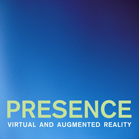
A Virtual Reality Embodiment Technique to Enhance Helping Behavior of Police Toward a Victim of Police Racial Aggression
Sameer Kishore, Bernhard Spanlang, Guillermo Iruretagoyena, Shivashankar Halan, Dalila Szostak, Mel Slater; A Virtual Reality Embodiment Technique to Enhance Helping Behavior of Police Toward a Victim of Police Racial Aggression. Presence: Teleoperators and Virtual Environments 2019; 28 5–27. doi: https://doi.org/10.1162/pres_a_00339
Download citation file:
Abstract
There is an alarming level of violence by police in the US toward African Americans. Although this may be rooted in explicit racial bias, the more intractable problem is overcoming implicit bias, bias that is non-conscious but demonstrated in actual behavior. If bias is implicit, it is difficult to change through explicit methods that attempt to change attitudes. We carried out a study using virtual reality (VR) with 38 officers in a US police department, who took part in an interrogation of an African American suspect alongside an officer who was racially abusive toward the suspect. Seventeen of the participants witnessed the interview again from a third person perspective (Observer) and 21 from the embodied perspective of the suspect, now a victim of the interrogation (Victim condition), having been assigned randomly to these two groups. Some weeks later, all witnessed aggression by an officer toward an African American man in a virtual cafe scenario. The results show that the actions of those who had been in the Victim condition were coded as being more helpful toward the victim than those in the Observer condition. We argue that such VR exposures operate at the experiential and implicit level rather than the explicit, and hence are more likely to be effective in combating aggression rooted in implicit bias.
© 2021 by the Massachusetts Institute of Technology


